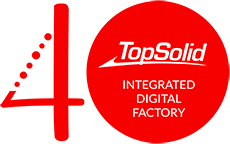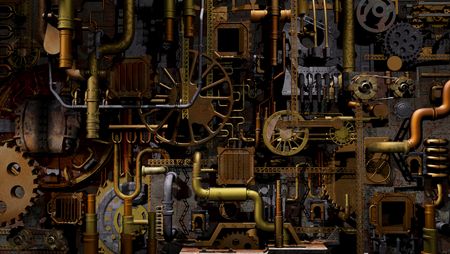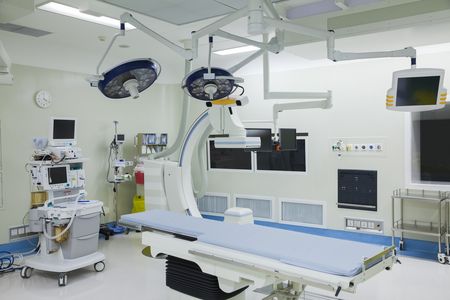
Points to Check When Choosing Your CAD Software
Choosing the right CAD software for your needs is not an easy task. So how do you find the suitable modeling software, and based on what criteria?
Whether you are engaged in a simple part design or a more extensive project, you rely on software where the provided tools offer a working method. This method addresses the specific challenges of each profession with the aim of achieving efficiency throughout the entire process, from the brainstorming phase to the validation phase.
To choose the right CAD software, it is important to carefully consider a suitable solution beforehand. Among the numerous criteria are the field and the position held in the company. Each profession indeed requires specific skills.
Regardless of the application domain, there is always a suitable CAD solution for your projects.
Features of CAD software
A CAD software, an industrial drawing software, must have all the necessary features to meet the challenges faced by professionals in the design of parts and machines. These challenges include:
- Shortened deadlines
- Increased competition
- Better inventory management
- More demanding quality standards
- A constantly evolving field
To address these challenges, your CAD software must be equipped with the following 7 key features:

A Modern and Ergonomic User Interface
The first essential feature of CAD software is its user interface. The easier and faster the software is to use, the more productive the user becomes. Commands should be designed according to modern conventions, with easy, quick, and intuitive access. Choose a CAD software with a modern and ergonomic user interface to reduce the learning curve and increase work efficiency.

Design Documentation Tools
The CAD software should allow easy generation of all necessary production documents from an assembly. Once the design study is completed, it should be documented. This includes generating exploded views, assembly instructions, and bill of materials (BOMs). These features are essential to fully leverage your CAD software.

Flexible and Powerful Design Methods
A good CAD solution offers three design methods:
- Bottom-Up Design: This simplest method involves first designing individual parts and then assembling them. The assembly is essentially a sequence of positioning predefined parts.
- Top-Down Design: In contrast, the designer starts with the constraint and then deduces the necessary assemblies and parts.
- In-Place Design: A variant of top-down design, parts are designed in their assembly context. This approach provides the advantage of simplicity, especially for creating connecting parts.

Associativity, a Guarantee of Reliability
Another essential feature of 3D CAD is associativity, which automates the update of one element in relation to another. This allows the designer to easily modify the construction history, with associated operations automatically updating. With associativity, a key feature of good CAD software, you significantly reduce the risk of errors or omissions when updating an element, saving time during the design process. Therefore, make sure to choose a tool that allows for associative or parametric design.

Intelligent Components
User productivity increases with the creation of good standard components. For this purpose, your CAD system must provide the appropriate features. Unique intelligent components, such as process management and placement assistants, allow for the storage of user expertise. Ultimately, the design process is accelerated, resulting in a significant productivity gain.

Detailed and Standardized Drawings
Despite the increasing prevalence of 3D, detailed and standardized drawings are often still necessary. Therefore, your CAD software should include an efficient module for automated drafting.

Change Management Tools
When choosing your CAD software, the range and performance of modeling features are essential criteria, but not sufficient on their own! Designers face management challenges, as changes to the specifications during the study are common. Therefore, the tool must offer intuitive and powerful features to handle these changes.
The choice of PDM (Product Data Management) is crucial. Choose a fully integrated PDM that allows you to effectively track changes during the study. From simple reference changes to more complex modifications, pay close attention to the capabilities of the PDM in your CAD software.
See Also
CAD SOFTWARE SOLUTIONS BY INDUSTRY
CAD software is used in several industries: aerospace, construction, engineering, manufacturing (especially automotive), the medical sector, and more. Using a CAD tool allows for the modeling of elements in 2D or 3D, regardless of their complexity. These CAD tools provide an excellent preview of a project or object before its actual production.
stay informed
Developments in CAD Software
TopSolid software is in constant development in order to always meet your needs efficiently. Here are the developments in the CAD software:
Maximized 3D machining potential
Thanks to the optimization of the user interface and high-quality machining paths.
Speed of programming
Machining programming with barrel tools in 5 continuous axes becomes child's play.
Optimized programming time
Revolutionary solution for automatically programming all your cylindrical, conical, or any other parts in continuous 4-axis milling.
Automatic definition of your cutting tools
The new GTC import interface offers the possibility of importing your ready-to-use cutting tools.
Easy tool settings
Thanks to improved collaboration between the methods office and the workshop. Your programmers can make faster adjustments and setups, ensuring a significant time savings.

INTEGRATED AND TRANSPARENT PDM (TECHNICAL DATA MANAGEMENT)
PDM, or Product Data Management, is a digital tool that enables the extraction, management, and storage of electronic information related to a product. In CAD/CAM, the advent of PDM has made it possible to centralize and smoothly and efficiently make available all CAD documents to all relevant users. Such a tool allows companies to implement collaborative work, capitalizing on their expertise while enhancing performance.
Today, it is essential to integrate a PDM into CAD/CAM software. The volume of data flowing through the different business processes of a company is constantly increasing, and product-related information evolves daily. In this context, TOPSOLID SAS already offers a highly advanced integrated PDM/CAD/CAM software suite, whose high-performance management system ensures the storage, updating, access, and sharing of data for everyone—from the methods office to the factory, including administrative services.
FREQUENTLY ASKED QUESTIONS ABOUT CAD SOFTWARE
What is CAD (Computer-Aided Design) ?
CAD, or Computer-Aided Design, is a design process that uses specialized software to create, modify, analyze, or optimize digital models of products or systems.
What industry uses CAD the most ?
CAD is widely used in many fields such as mechanical engineering, architecture, product design, integrated circuit design, and more. It allows designers to visualize and simulate products before manufacturing, which can reduce development costs and speed up the design process.
What is CAD software used for ?
The main role of CAD software is to assist designers in the design process by providing digital tools to create, modify, analyze, and document 2D or 3D models.
Why do we need CAD software ?
Using CAD software offers numerous advantages that can improve the quality, efficiency, and profitability of the design process in various industrial fields.
What are advantages of CAD Software ?
The advantages of CAD are numerous, including: reduced design time, lowered production costs, improved design quality, the ability to test designs before production, and the capability to collaborate with remote users.
Need more information








